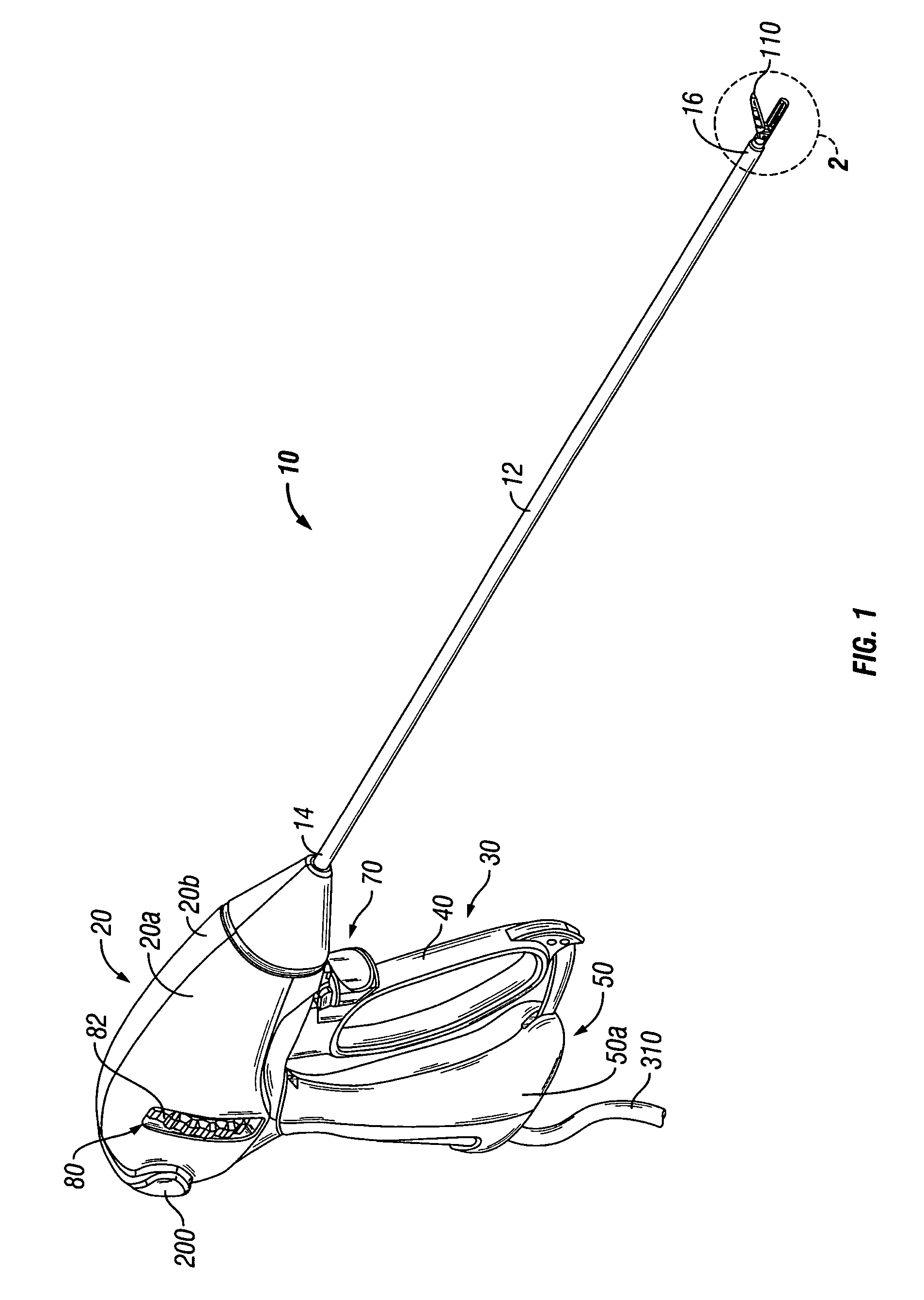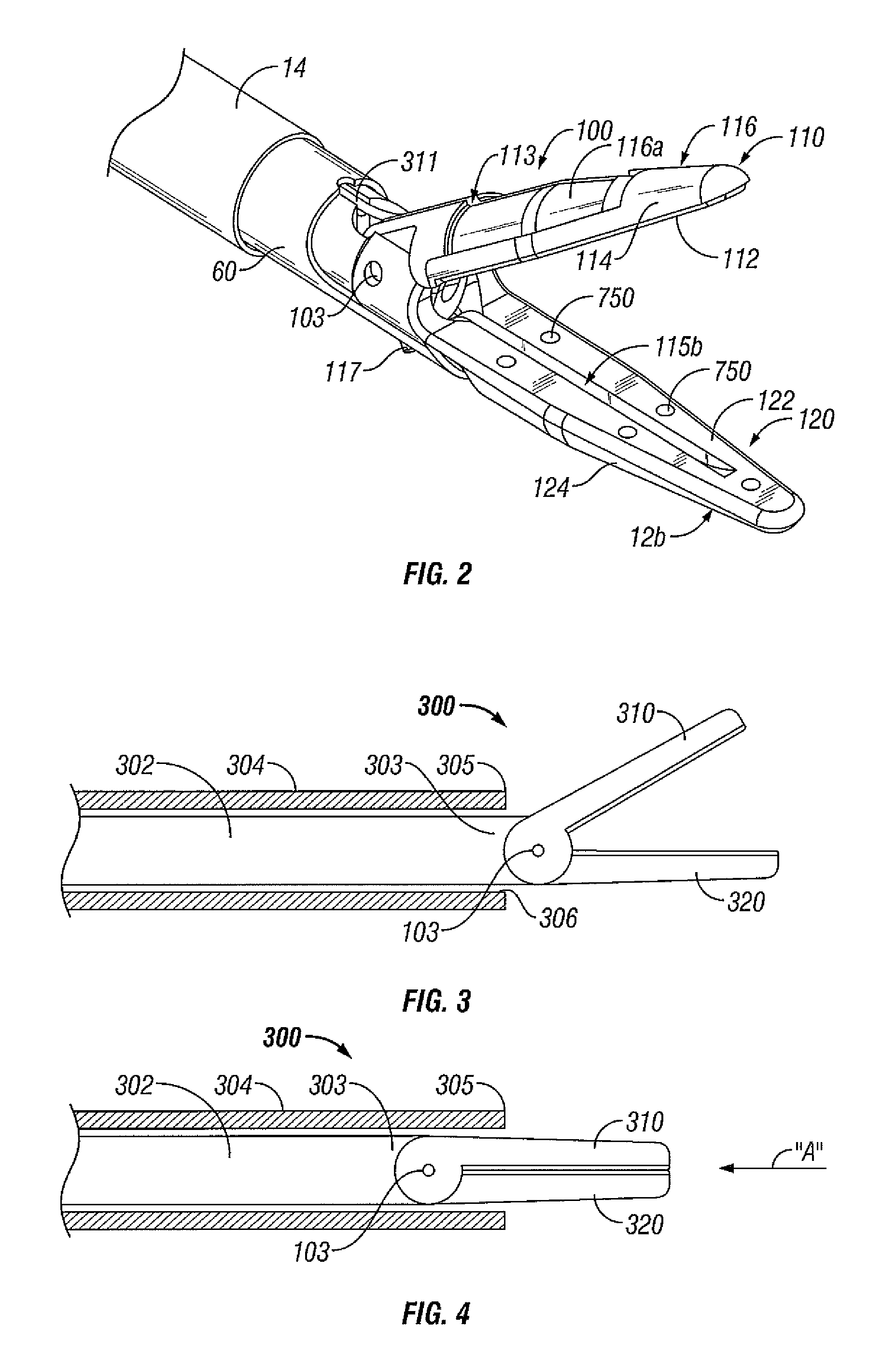Flexible endoscopic catheter with ligasure
a flexible, endoscopic technology, applied in the field of electrosurgical forceps, can solve the problems of reducing the effect of endoscopic surgery, shredding or tearing,
- Summary
- Abstract
- Description
- Claims
- Application Information
AI Technical Summary
Benefits of technology
Problems solved by technology
Method used
Image
Examples
Embodiment Construction
[0059]Turning now to FIGS. 1 and 2, an embodiment of an endoscopic bipolar forceps 10 is shown for use with various surgical procedures and generally includes a housing 20, a handle assembly 30, a rotating assembly 80, a trigger assembly 70 and an end effector assembly 100 that operates to grasp, seal, divide, cut and dissect corporal tissue and the like. Although the majority of the figure drawings depict a bipolar forceps 10 for use in connection with endoscopic surgical procedures, the present disclosure may be used for more traditional open surgical procedures. For the purposes herein, the forceps 10 is described in terms of an endoscopic instrument, however, it is contemplated that an open version of the forceps may also include the same or similar operating components and features as described below.
[0060]In the drawings and in the descriptions that follow, the term “proximal,” as is traditional, will refer to the end of the forceps 10 which is closer to the user, while the te...
PUM
 Login to View More
Login to View More Abstract
Description
Claims
Application Information
 Login to View More
Login to View More - R&D
- Intellectual Property
- Life Sciences
- Materials
- Tech Scout
- Unparalleled Data Quality
- Higher Quality Content
- 60% Fewer Hallucinations
Browse by: Latest US Patents, China's latest patents, Technical Efficacy Thesaurus, Application Domain, Technology Topic, Popular Technical Reports.
© 2025 PatSnap. All rights reserved.Legal|Privacy policy|Modern Slavery Act Transparency Statement|Sitemap|About US| Contact US: help@patsnap.com



